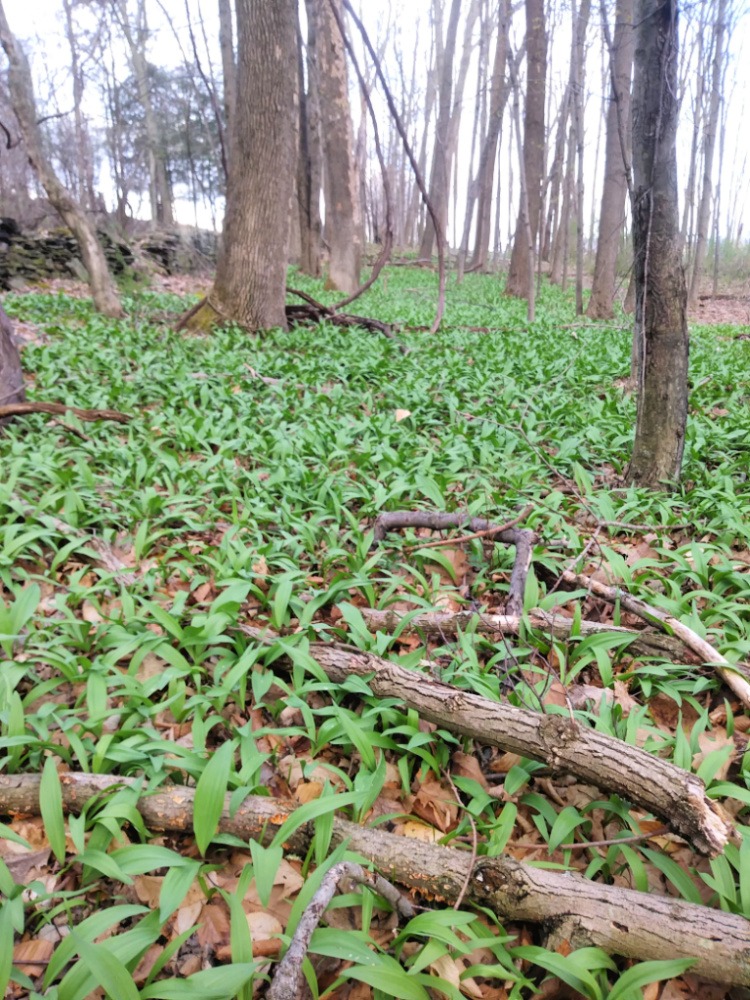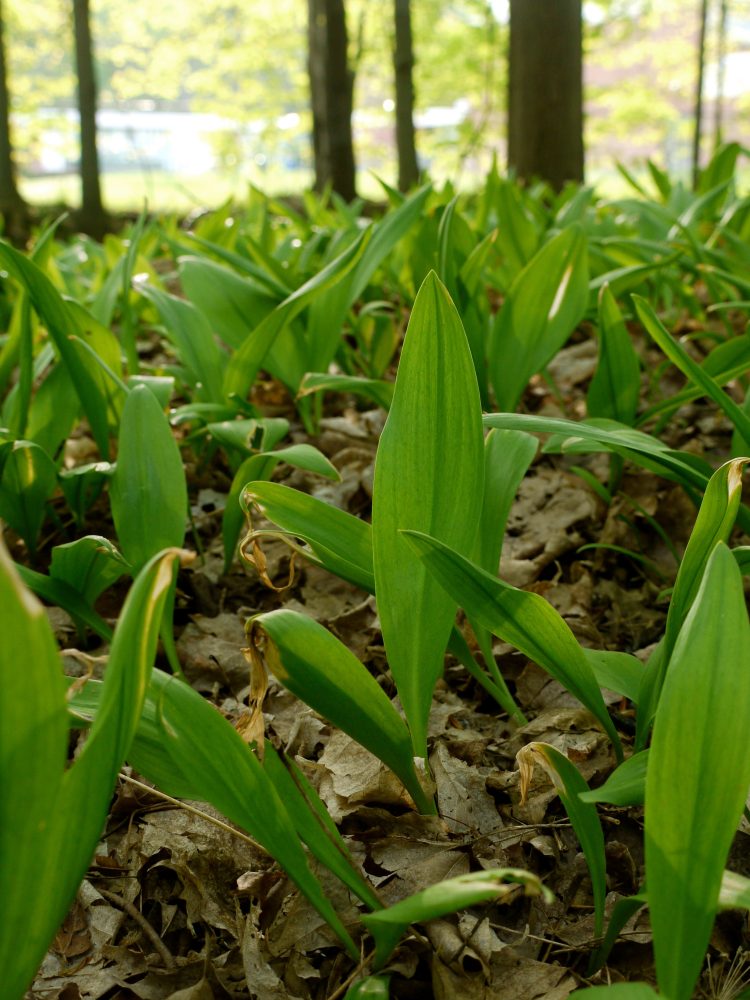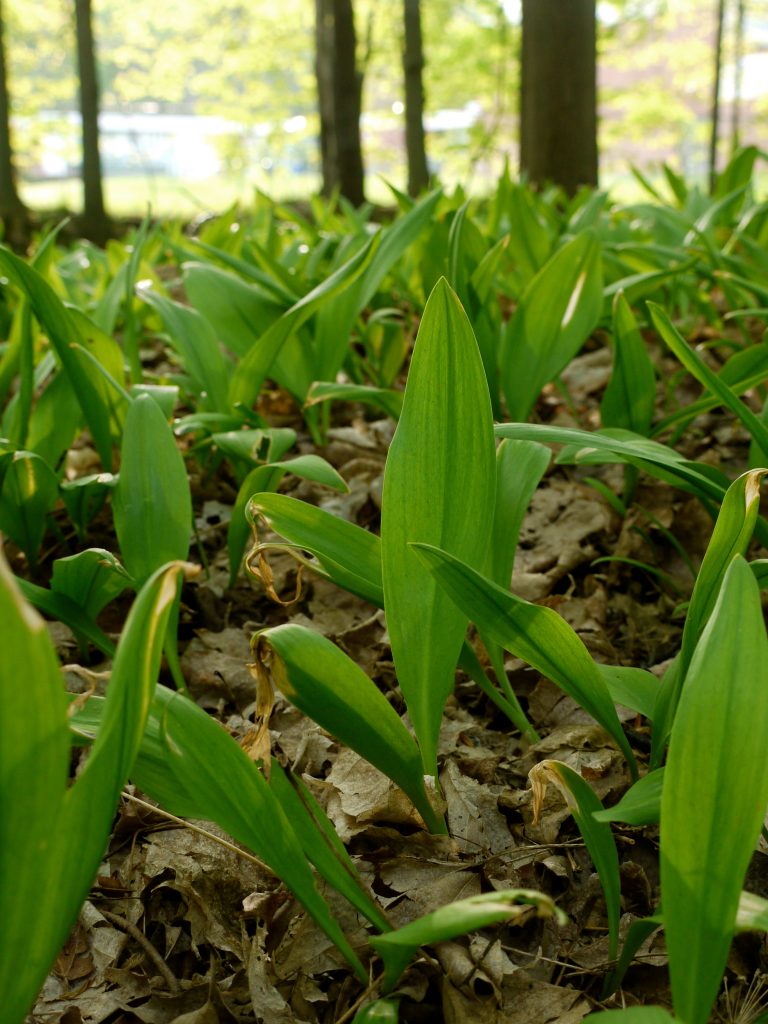
I’ve often said that if I could forage only one wild food, it would have to be ramps. These wild leeks are delectable, and I love them sautéed, in ramp soup, in frittata, and in this delicious wild ramp salt.
Identifying Ramps

Ramps, also known as wild leeks (Allium tricoccum), are found in the eastern U.S. I generally find them on north facing slopes under deciduous trees in late April or early May.
Each ramp plant has 2 – 3 broad leaves with entire (smooth) margins. The bulbs are white, and the stems may be white or burgundy. One of the most important identifying characteristics of the ramp is its garlic aroma. Crush a leaf; if you don’t smell garlic, you don’t have ramps.
Beware of the lily-of-the-valley, a poisonous look-alike.
Foraging Ramps
Unfortunately, ramps are among the most controversial of all foraged delights. Post an article on social media about ramps, and you’re sure to get trashed, one way or another.
There are those who are completely against any harvesting of ramps, and others who insist that only the leaf, and not the bulb should be harvested. I understand. Big city restaurants pay top dollar for ramps, and consequently they are over-harvested.
My advice is to harvest based on your location, and the number of ramps growing. Never take more than you can use, leave some for others, and most importantly make sure the patch from which you are harvesting is treated with respect so that the ramps can reproduce and provide for others for generations to come.

That said, I do personally harvest both the bulb and leaf. Where I harvest, there are acres and acres of wild ramps, and we take very few. If ramps are scarce in your area, don’t harvest at all. If you find a nice patch, but it’s the only patch around, then I suggest that you only harvest one leaf from each plant and leave plenty so that the patch can continue to reproduce.
Another important tip for harvesting is to harvest in the middle of the patch where the ramps are crowded. Leave the ramps at the edges of the patch alone, so that they can continue to spread out.
And I also always scrub my digging tool before heading into the woods so that I don’t bring any disease from my garden into the woods. I then carefully dig a bulb here, and a bulb there, being careful to replace any displaced soil. After leaving the patch, no one should be able to tell that you were there.
Lastly, some foragers advise harvesting the ramps by cutting just above the roots. The thinking is that you still get the bulb, but leave the roots to grow again. I did practice this method for a year or two, but it was suggested to me that I was potentially introducing disease into the patch with this method and so I no longer harvest this way.

Wild Ramp Salt
Wild ramp salt may used as a finishing salt to add extra flavor to any savory dish, or as a rub for meat. To make, first dehydrate your washed ramp leaves by placing them in a dehydrator in a single layer at 100°F for 4 – 6 hours until brittle. (I use an Excalibur dehydrator).
Then powder them in a blender (I use a bullet blender), coffee grinder, or mortar and pestle.
Then simply mix 2 parts ramp powder to 1 part fine sea salt.
More Posts on Foraging You’ll Love
Ramps and Potato Soup
Ramps and Garlic Mustard Frittata
Oven Roasted Potatoes on a Bed of Pine
Homemade Blueberry Mead
Low-Sugar Elderberry Jelly
Dandelion Oil Lotion Bars
5 Common Plants to Forage for Food and Home Remedies









































